This post, part of an intermittent series, is about strategies to support young photographers (A-level students in my case) to develop a personal and critical relationship with photography. It’s aimed at photography educators, those who have subscribed previously to the Photopedagogy blog, valued colleagues and friends, but I hope it’s of interest to others too. I don’t claim to be any kind of expert so whatever I share is offered in a spirit of amateur enthusiasm. I’d love to know if any of it resonates with you.
I’m always on the lookout for ways to encourage young photographers to reflect on photography’s histories and theories. I was originally an English teacher with a degree in Literature and Art History. I’m drawn to the dialogue between words and images and my teaching reflects an interest in signs and communication. The challenge is always to try to make relatively academic content appealing to a young person, especially when they may have chosen to study photography to avoid such things.
John Szarkowski’s influence on the history of photography has been profound. As the director of MoMA’s photography department from 1962 to 1991, as a curator, writer, historian and critic, (and a committed photographer, let’s not forget) he helped to shape a particular way of thinking about photography. Without his support, would William Eggleston have become quite so celebrated or Winogrand, Friedlander and Arbus so revered?
Clearly, some of Szarkowski’s ideas are rooted in a specific historical period. However, the perspicacity of his thinking and writing has left its considerable mark. Above all, he celebrated the democracy of photography, its multivalence and indeterminacy.
Take the following assertive statement from Szarkowski’s catalogue introduction to the 1978 exhibition Mirrors & Windows: American photography since 1960 at MoMA:
… there is a fundamental dichotomy in contemporary photography between those who think of photography as a means of self-expression and those who think of it as a method of exploration.
-- John Szarkowski
I often find that these binary positions, a photograph is this or that, can really help students digest complex ideas. What begins as an over-simplified, reductive position quite quickly becomes a nuanced spectrum of opinion, something to discuss and debate. It gives them a way in, a portal1, permission to rummage about in the big, messy jumble sale of history to find one or two items that fit them.
In a recent lesson, we began by discussing the following:
What is it like to look into a mirror?
How would you describe looking through a window?
Which do you prefer and why?
Is looking at a photograph like looking at a mirror or through a window (or both)?
We are at the point in the course when students are beginning to decide how to shape their Personal Investigations. It would be relatively simple to give them a list of starting points suggested by the exam board, but we encourage our students to design their own. It’s not easy. Partly, this involves reflecting on their emerging relationship with photography. What is a photograph? What is like to look at the world with a camera? What do I like to look at and why? What do I want to make photographs about?
But how can thinking about mirrors and windows help?
In the exhibition, Szarkowski assigns the label of mirror or window to a selection of contemporary photographs (i.e. American pictures of the 1960s and early 70s) from the MoMA collection. But he also positions these images in the broader context of photography history2. In other words, it might be possible to view all photographs in this way.3
The press release that accompanied the exhibition attempts to explain the curator’s idea (my italics):
MIRRORS AND WINDOWS has been organised around Szarkowski's thesis that such personal visions take one of two forms. In metaphorical terms, the photograph is seen either as a mirror — a romantic expression of the photographer's sensibility as it projects itself on the things and sights of this world; or as a window — through which the exterior world is explored in all its presence and reality.
-- Museum of Modern Art Exhibition Press Release, 1978
In class, we discussed these categories, referring back to our thoughts about the experience of looking in mirrors and through windows.
I printed out a stack of small images from the exhibition and asked the students to create a line of tape on their desks with the words MIRROR and WINDOW on notes at either end. Their task was to decide where the pictures should be placed along the axis. The only rule was that they must achieve consensus about where an image should be placed, guaranteeing some heated debates.
Each group, not surprisingly, came up with different arrangements. Some images really divided opinion; educational gold dust. We visited each group’s tables, debated their choices and referred back to Szarkowski’s curatorial decisions4. There was even a quiz entitled Mirror or Window?
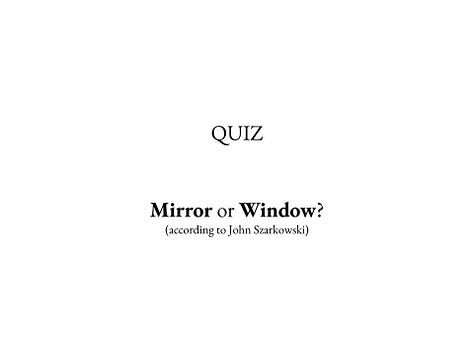
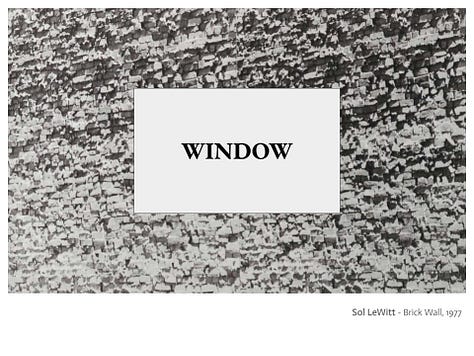
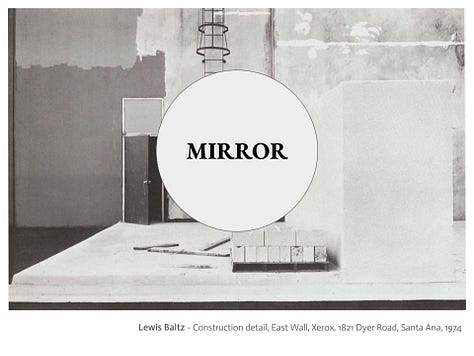
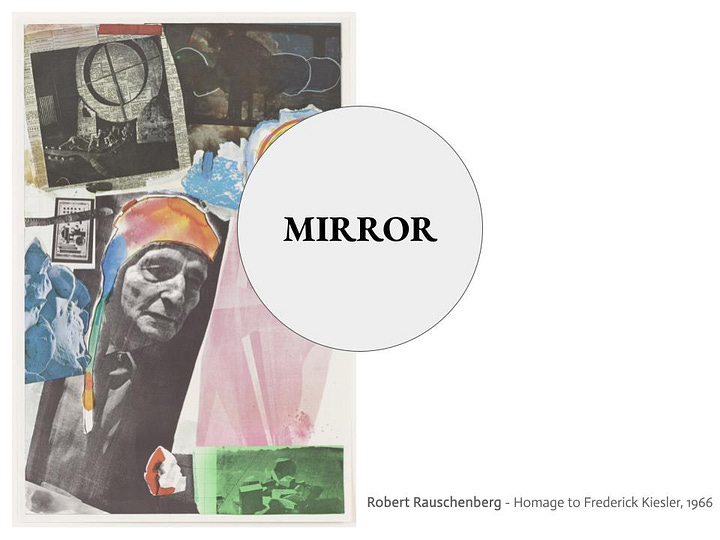
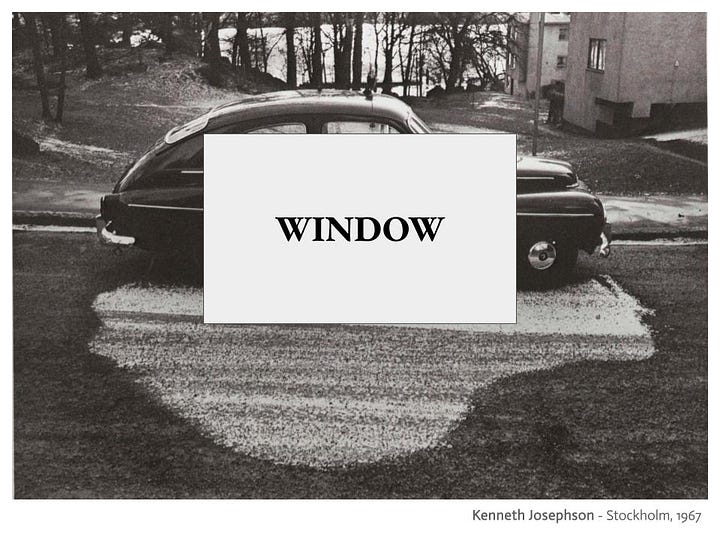
The final challenge for the students involved selecting examples of their own pictures that could be either mirrors (self-reflective, psychological, synthetic or expressive images) or windows (relatively unmodified, clearly framed views of ‘reality’). They all managed to find such pictures but, invariably, decided that each one contained aspects of both.
My hope is that this exercise has achieved several things:
The students have gained a basic grasp of the ways that curators, critics and historians shape our understanding of a medium like photography
They have a way of thinking about their own images critically and metaphorically
They can begin to position their own image-making somewhere along the axis that joins radical self-expression at one end, to relatively ‘straight’, documentary-style depiction at the other
I’ll have to be patient to see if these ideas return, in some form, during their investigations.
I would be really interested to know if this sounds like something you might want to try with your students and, if so, how it worked for you (and them). Also, what strategies do you use to engage your young minds with photography history and theory? How do you try to make it fun and engaging for them? Or perhaps you steer clear of this sort of thing and maximise the time for making and doing…? Do let me know, either way, in the comments below.
Until next time.
https://www.photopedagogy.com/threshold-concepts1
Szarkowski refers to Steiglitz’ Equivalents (Mirrors) and Atget’s Paris (Windows), along with the work of Minor White (Mirrors) and Robert Frank’s The Americans (Windows) as exemplifying his thesis.
He later admits that the categories are not intended to be divisive:
The intention of this analysis has not been to divide photography into two parts. On the contrary, it has been to suggest a continuum, a single axis with two poles. Many of the pictures reproduced here live close to the centre of that axis, and can at the reader's pleasure be shifted mentally to the other side of the book's imaginary equator.
We took a careful look at particular photographs from the exhibition, thinking about their characteristics and qualities, wondering why Szarkowski had assigned them to either the Windows or Mirrors sections. I also had the catalogue available for reference.







Mirrors and windows is a very interesting way of describing photography! I will use some of your exercises while looking at my own photography. Thanks for sharing!
I think the importance of Szarkowski’s experience as a maker can't be overstated in this specific context and in his critical perspective overall. It's also important to realize that picture-making always came first, and theory second